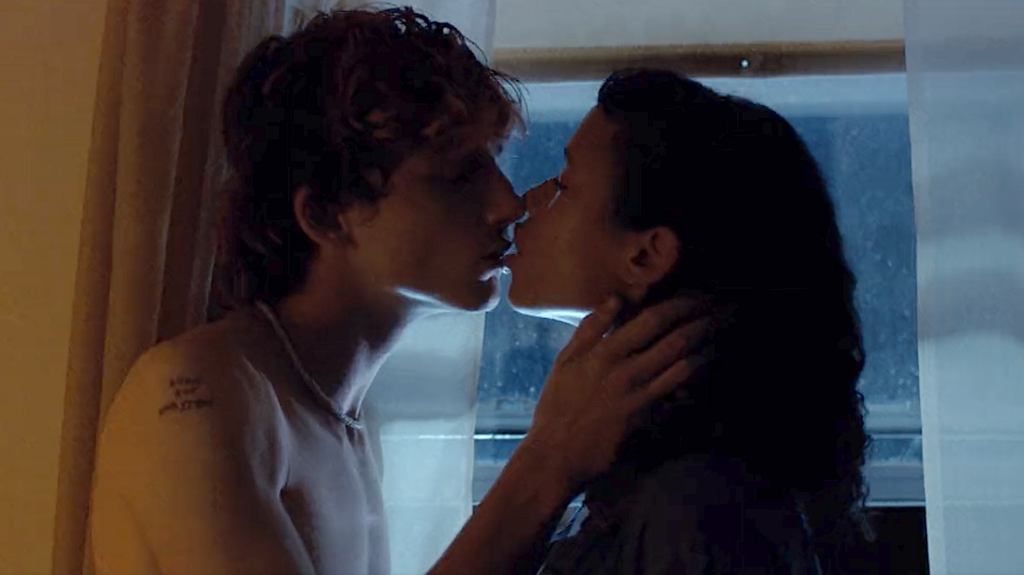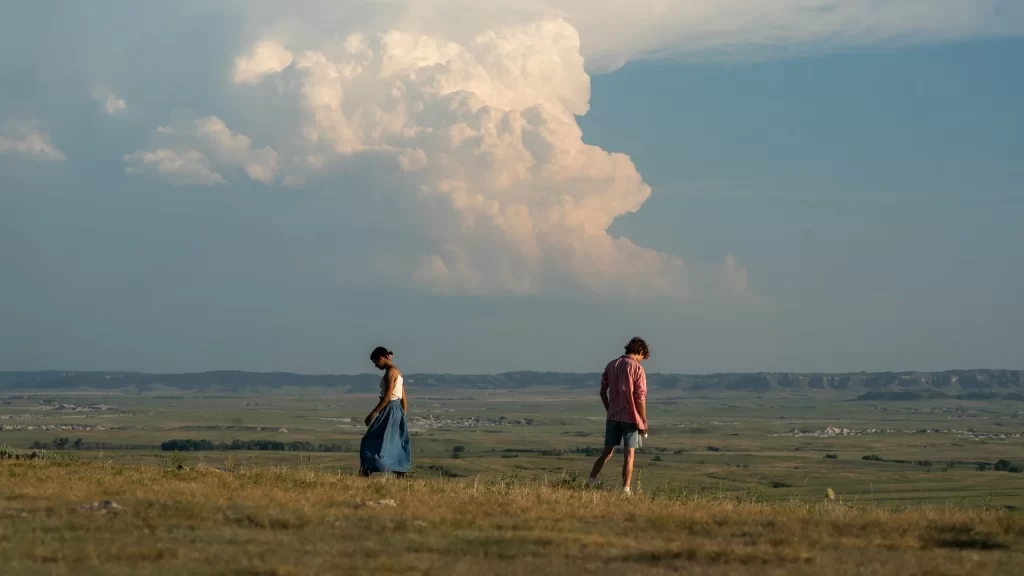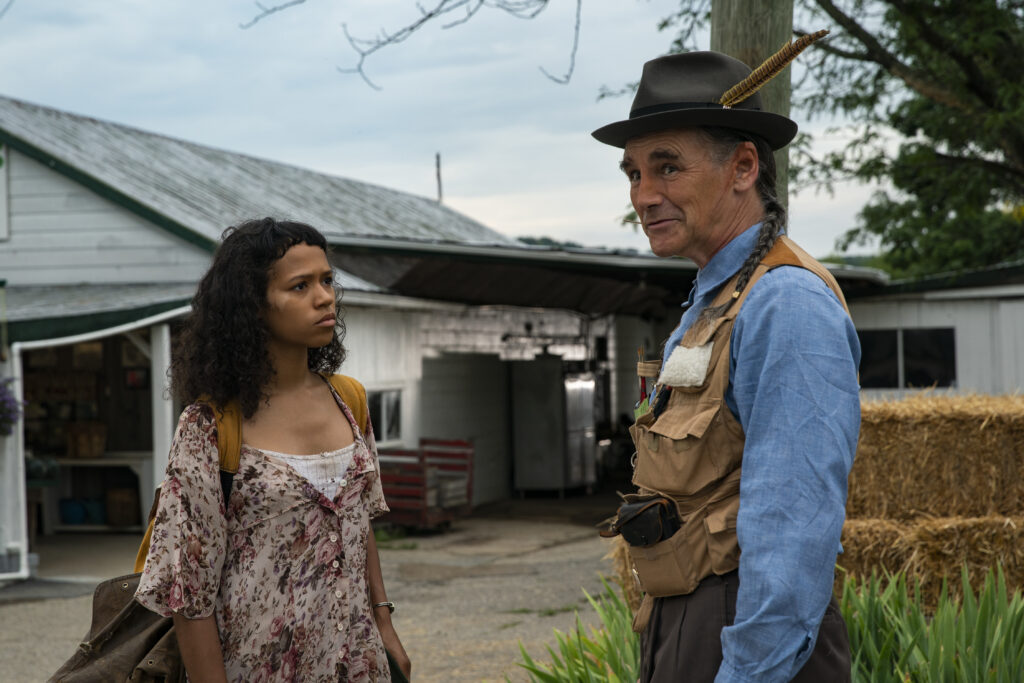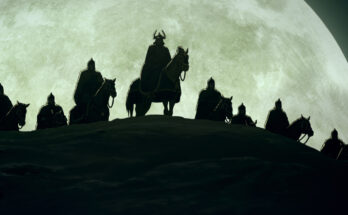Want to hear more from the actors and creators of your favorite shows and films? Subscribe to The Cinema Spot on YouTube for all of our upcoming interviews!
Managing editor & film and television critic with a Bachelor's of Arts in English Literature with a Writing Minor from the University of Guam. Currently in graduate school completing a Master's in English Literature.
Without making any real plans to do so, on a whim, I decided to go for a late-night screening of Bones and All at my local theater. On one hand, coming out of the auditorium around midnight, this film felt enlightening and insightful, while on the other hand, this type of narrative may not be for everyone. This drama horror romance project is written by David Kajganich and is directed by Luca Guadagnino (We Are Who We Are).
In this review, I will be discussing Luadagnino’s seventh directorial film, Bones and All. As the title of this article suggests, there will be no spoilers. With that said, beware of potential spoilers ahead for Bones and All.

Discussion
Watching this film from the academic setting in the opening scene to the poetic bittersweet closing scene only made me wish I had read the source material. Something about this adaptation was done so well that I do not think it could be replicated for improvement. Khachaturan’s cinematography has a range of point-of-view (POV) shots and organic framing, with a neat brief tracking shot in the final scene. Although more than anything, it is meant to remind you that this is a road trip kind of narrative. Therefore, you will have to expect a lot of shots with protagonists Maren (Taylor Russell) and Lee (Timothée Chalamet) driving behind the steering wheel.
In terms of the time-and-place setting, Guadagnino and Kajganich do a great job at compartmentalizing the narrative into different chyrons. On-screen, they present different months or United States of America state abbreviations for every “chapter” of the plot. For example, May, July, August, Maryland (MD), Ohio (OH), Indiana (IN), Nebraska (NE), etc.
Alongside that, the film pulls a clever move at reminding you that it takes place in the 1980s without getting too in-your-face about the fact. I have to attribute this to Reznor and Ross’s curation of the scoring. In the first act, when the main characters enter one of their first victims’ homes, we see a vinyl of a Kiss record. The 1980s era is most known for its electric guitar rock and pop sound, so maybe that’s why we forget every other music that existed at this time.
Costa and Monti’s editing is such a lovely sight. It breaks the structure of the narrative, going from an intense mood in one scene to a calming and tranquil tone in the following moment of the next scene. The film doesn’t transition smoothly, and that’s the purpose. The storytelling keeps the suspense of the horror — and the viewers thereof at the age of their seats — but not hinting at what exactly comes next. There is no exact way of expecting how this all goes down, and you just have to watch everything play out.
Psychoanalyzing the Horror Aspects
To perceive this as a movie at face value — i.e., a narrative centered on cannibalism — is not enough. Instead of referring to the characters as cannibals, the writer calls them “eaters”, which is a light way of putting it. This film doesn’t tap into the jarring visceral aspect of horror as much as other cinematic narratives within the genre, such as the late George A. Romero’s [BLANK] of the Dead films, The Walking Dead, or more recently, the Terrifier movies. It is about the obsession with human connection and the cruel ways in which the emptiness or lack thereof can leave us. In the vampire subgenre, the Twilight saga attempted it; and in the zombie subgenre, Warm Bodies did it. Bones and All, however, accomplishes it best. Here, the “eater” characters of the narrative illustrate this idea perfectly.
Bones and All is a metaphor for the feeling of which love is only one kind of affection that embodies completeness. To be consumed is to be filled with the essence of an other that makes us whole. It isn’t enough to establish a sort of bond; there needs to be something beyond that. That’s when it becomes some type of affection akin to lust.
My only argument here is that the film is not much of a horror film as it is a suspenseful romantic drama. One element of Gothic horror that does appear present is Gothic modernism. In his critical text, American Gothic Fiction: An Introduction, British professor Allan Lloyd-Smith defines this element as “a working out of events from the past which emerge in uncanny interconnections and buried lineages” (116). This search for a “digging up” of the past is something that Russell’s character, Maren, engages in and something Chalamet’s Lee is looking to avoid, or rather, hide. This is the more intriguing part about the film that I have come to appreciate and that gives it a layer of increased narrative beats.

The Crew Behind Bones and All
Bones and All is based on the 2015 novel of the same name by Camille DeAngelis.
Chalamet, Guadagnino, Kajganich, Francesco Melzi d’Eril, Lorenzo Mieli, Marco Morabito, Gabriele Moratti, Theresa Park, and Peter Spears serve as the producers of the film. Lisa Muskat serves as the co-producer. Marco Colombo, Giovanni Corrado, Jonathan Montepare, Raffaella Viscardi, and Moreno Zani serve as the executive producers.
Arseni Khachaturan serves as the director of photography. Marco Costa serves as the editor, while Ilario Monti is the assistant editor.
Trent Reznor and Atticus Ross (HBO’s Watchmen) score the soundtrack of the film. Robin Urdang (We Are Who We Are, The Marvelous Mrs. Maisel) is the musical supervisor. Roberta D’Angelo and Jack Dolman (Solo: A Star Wars Story, Cherry, The Gray Man) are the music editors.
Elliott Hostetter is the production designer, while Victoria Resendez (The Gifted) is the art director. Merissa Lombardo (I’m Thinking of Ending Things) and Rebecca Steele are the set decorators.
Giulia Piersanti (Call Me by Your Name, Suspiria, We Are Who We Are) is the costume designer for the film. Begonia Berges (Daredevil Season 3) serves as the assistant costume designer. Joy Galbraith and Christine Stansbery (Venom, Lovecraft Country) are the costumers. Galbraith, Francesco Basti, and Tiuana Bell (Doom Patrol) serve as the key costumers.
Francine Maisler (An American Pickle, The Trial of the Chicago 7, Dune) serves as the casting director. Molly Rose (An American Pickle, The Trial of the Chicago 7, Dune) is the casting associate.
The Cast of Bones and All
Taylor Russell (the Escape Room films) portrays the protagonist, Maren Yearly. Timothée Chalamet (Dune) plays Lee, a fellow “eater” and Maren’s love interest in the film.
Mark Rylance (The Trial of the Chicago 7) portrays Sully, an older “eater”. Michael Stuhlbarg portrays Jake, an “eater” from the Midwest, while David Gordon Green (Halloween, Halloween Kills, Halloween Ends) plays Brad, a rookie police officer and a companion of Jake’s.
André Holland plays Maren’s father, Leonard Yearly, while Chloë Sevigny (We Are Who We Are) portrays Maren’s mother, Janelle Kerns. Anna Cobb appears as Kayla, Lee’s younger sister.
Jake Horowitz plays Lance, a man running a booth at a Kentucky fair. Jessica Harper plays Barbara Kerns, Janelle Kern’s adoptive mother. Burgess Byrd plays Gail, a nurse at an infirmary in Fergus Falls, Minnesota.

Performances and Character Developments
Russell and Chalamet have such stunning chemistry throughout the film. Having come from the Escape Room films, I have already become familiar with the former’s acting prowess. The difference in this film is her character embodies a sense of reservedness, only being open to the company of Lee. There is much to say about this character, including how the camera tends to follow in her path, even getting shaky at one point at the discovery of a victim’s living family.
Outside of Lady Bird, I haven’t seen much of Chalamet’s performances in other works. (Although, my other co-writers here at The Cinema Spot have him in high praises.) Opposite Maren, Lee has little-to-no concern for his own family, and the only relative of his whom we see is Kayla (Anna Cobb). As an “eater” he is not as powerful — Maren, Sully, and Jake are able to smell body odors to a high degree — but he makes up for it in his stealth and fighting skills.
Stuhlbarg appears alongside Green in one scene, but what they have to offer is still one of the creepiest performances of the first half of the film. The former actor shines in that one scene despite the limited screen time he has. Compared to his Men in Black 3 character, Griffin, Stuhlbarg’s Jake is a menacing figure. It’s difficult to determine what this character is capable of, and I can only imagine what more he could have contributed if he pulled through with his antagonistic traits.
Childish Innocence or Pure Evil?
More than that, Rylance has a couple more scenes than Stuhlbarg and Green do in their sole scene. Rylance steals the show as the “villain” of the film. His character seems to have a code to what he does, yet he knows no bounds. That is what makes him creepier than the other two “bad guys” of the narrative.
Interestingly enough, there is something that Sully has in possession that I could argue serves as an eerie symbol for the spiral. With every victim, he adds to this “spiral” item, indicative of the uncanny repetition of his actions and his proclivity to consume. We do not see it on-screen much, but it is worth looking into. A character study on Sully would make for a rather remarkable analysis on its own.
Final Thoughts on Bones and All
Guadagnino does not go overboard with the horror in comparison to what we have seen in Suspiria. Yet, in Bones and All, there is still a level of discomfort that exists from start to finish. The writer and the director’s ability to deconstruct the narrative by further breaking down its structure into moments, days, or chapters makes for an even more palatable viewing experience. No doubt this film provides a metaphorical message and through its minimal focus on characters — especially with the brief presence of older characters — we are reminded that this hunger for a deeper connection is strongest in youth. Rylance’s Sully is written excellently in this regard, depicting how obsession leads to madness.
A second viewing would be necessary, but let’s see if not eating dinner prior would lend to a drastically different perception of the film. As great as Holland and Sevigny performed as Maren’s respective parents, it was necessary to give them the limited screen time that they got. I don’t think the narrative had to invest any more concentration in their characters, and I believe the same goes for Jake and Brad.
With that said, see this film after having eaten a meal and/or dessert or don’t; take it with a grain of salt or exceed that amount; maybe come into it with a seasoned mindset. In my opinion, it is one of the better films of this year that we have gotten to see! If I had to give it a rating: 10/10.
Luca Guadagnino’s Bones and All is now playing in theaters!
Have you seen Guadagnino’s previous projects? If so, then what are your thoughts on them thus far? Let us know! For more drama, horror, and romance-related news and reviews visit and follow The Cinema Spot on Facebook, Twitter, and Instagram!
Managing editor & film and television critic with a Bachelor's of Arts in English Literature with a Writing Minor from the University of Guam. Currently in graduate school completing a Master's in English Literature.





15 Comments on “‘Bones And All’ Non-Spoiler Review – A Craving For Human Connection Through Metaphorical Consumption”